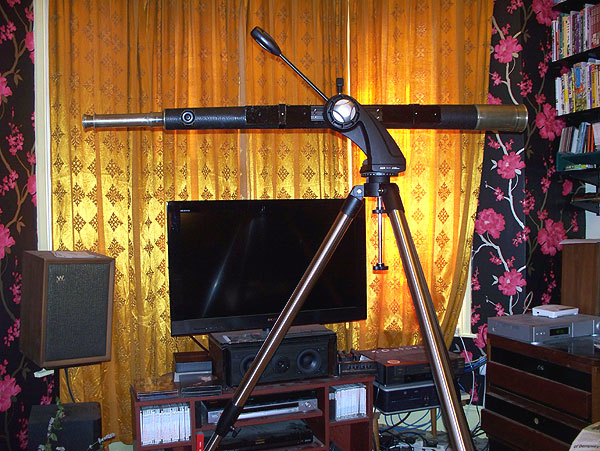In the past few months I have become interested again in dabbling with amateur astronomy, prompted by some interesting planetary conjunctions. The observing conditions behind my house are far from ideal, with urban glare and haze making it hard to see stars much fainter than 2nd magnitude, even when it’s not cloudy.
For the past few years I have had a “Skylux” 70-700 refracting telescope that I bought at Lidl. The supermarket chain offer these scopes seasonally, and they are a great bargain. The current offering, branded ‘Bresser’ costs around £50-£60, for which you get a complete kit including an equatorial stand. If you want a starter scope, get one of these as soon as you see it instore. The mounting is similar to an “EQ2” which costs around £100 on its own. You can’t even buy one upmarket telescope eyepiece for £50, let alone a complete kit. The performance is not too bad, despite the give-away price.
Last month I saw the planet Mercury at its conjunction with Venus, initially with the telescopes, then with the naked eye (a rare sight.)

I decided it needed a serious mount and tripod to make it fit for occasional use. It was a bit of a shock to discover just how much a ‘serious’ mounting for a long & heavy scope was going to cost. An equatorial mount man enough for the job would have been over £200, and that’s without any electric drives. I settled for an AZ-4 mount to make it fit for terrestrial and occasional astronomical use. This was the more expensive version of the AZ-4 with stainless steel legs and weighs 18.5 lbs. I still had to buy an overpriced dovetail plate and make up a mounting saddle for a tapered tube.
Having assembled all this kit, I was able to confirm that the old scope contained some serious optics and I got great views of Mars, Venus, Jupiter and the Moon using a decent Plossl eyepiece. It’t the same aperture (70mm) as the Lidl scope but has a noticeably superior performance.
On the other hand, the Lidl scope is one third the weight, a lot shorter, and does not require such a heavy and expensive stand.
Which goes to show that the brass refractor, once a mainstay of well-heeled amateur astronomy, has become obsolete. Since I last took an interest in such matters, the scene has totally changed, with various manufacturers offering a bewildering array of high-tech scope designs at affordable prices. You can pore over compact, portable, GOTO, refractor, reflector, Maksutov, large aperture, whatever suits your interest and wallet. Nowadays compact Maksutov scopes are quite affordable, as are computerised ‘GOTO’ mountings.
I suspect that a lot of the stuff bought is seriously under-used, judging by the number of ‘Astro Scope, used twice’ ads appearing on Ebay.
Skip to content
Japanese animation weblog and website
